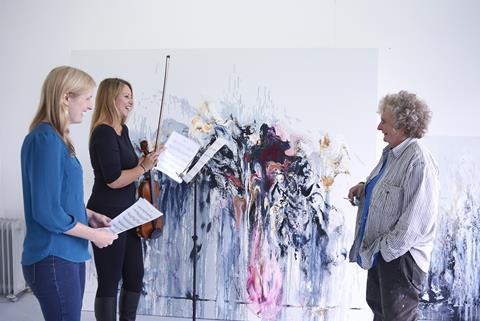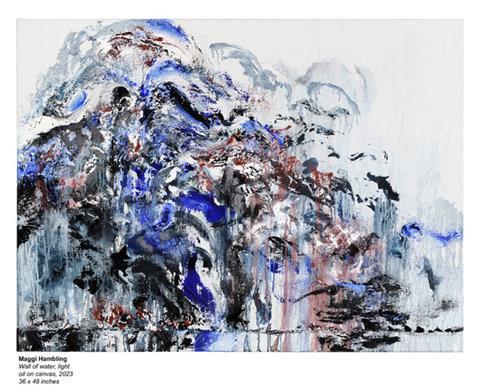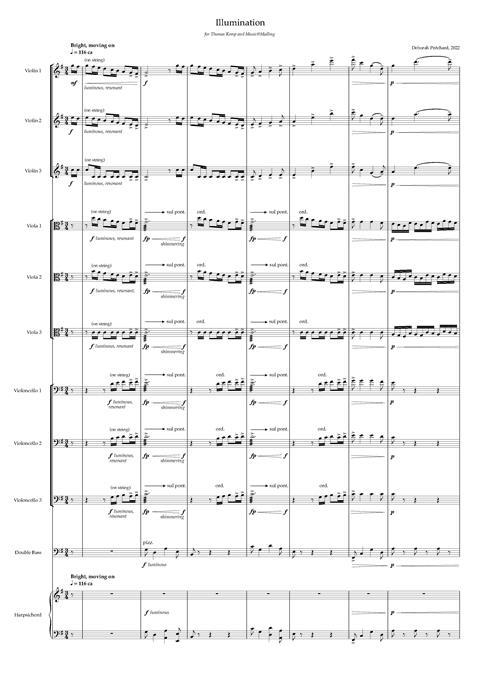Thomas Kemp speaks to synaesthetic composer Deborah Pritchard on how colour and light are represented in her new works

Discover more Featured Stories like this in The Strad Playing Hub
String playing has the capacity to create a vast palette of colour, texture and shape. For some musicians, this is made all the more vivid by the perceptual phenomenon synaethesia where music is experienced as colour. Having an awareness of this as a performer is key to unlocking the music and its intention. It makes interpretation a voyage of colouristic discovery and one where light, shade, texture and colour can be vividly conveyed to the audience.
British composer, Deborah Pritchard is a synaesthetic composer. I asked her when she first became aware of perceiving sound as colour:
’As a child, painting and drawing came before composition, but as I became more aware of music it was clear to me that certain harmonies seemed warmer or colder than others. It was initially so natural I didn’t question it, but once I started both my undergraduate degree at the Guildhall School of Music and Drama (where I initially studied double bass) and my masters degree in composition at the Royal Academy of Music, I began to realise that not everybody shares this synergy. I then felt compelled to explore my synaesthesia in more detail and completed a D.Phil in Composition at Worcester College, Oxford where my thesis explored the relationship between colour and music.
’My synaesthesia occurs with colour and intervals: both vertical harmony and linear melody, focused on the spaces in between the notes rather than any variation of key signature. Fourths, fifths and tritones feel colder colouristically, while thirds and sixths seem warmer. The major second has a brightness more naturally linked to light and semitones (and microtones) can be both light and dark depending on the context. The tritone has a tendency towards both sides of the spectrum. While my synaesthesia is extremely subjective, it’s notable that some aspects of my practice were also shared by Olivier Messiaen, who said in his posthumously published Treaty of Rhythm, Colour and Ornithology that:
“A chord charged with thirds seems hot, you can slightly cool it by adding a resonance charged with fifths. A chord charged with fifths seems cold, you can warm it up slightly by adding a resonance loaded with thirds.”
Fourths, fifths and tritones feel colder colouristically, while thirds and sixths seem warmer
’Awareness of light and darkness can also affect register, timbre, texture and rhythmic intensity, particularly if light is becoming more intense or receding away, perhaps similar to the colour saturation of arial perspective in painting technique.
’While my sound-colour relationships have mostly stayed the same, my conscious decision to explore, practise and refine my colouristic approach has allowed me to use it as keystone around which my artistic language is built. I believe that instinctive and subjective thought should be nurtured and developed as a means to discover new forms of working and expression.
’This visual way of thinking directly affects my overall approach as a composer and certain aspects will be more precise than others. For example my violin concerto Wall of Water (2014), written for violinist Harriet Mackenzie, was inspired by the seascapes by contemporary artist Maggi Hambling, and rather than try to represent each painting individually, I chose to create a through-composed structure to emulate one expressive wave. This allowed freedom and expression within my synaesthetic response.’
Wall of Water by Deborah Pritchard performed by Harriet Mackenzie
Light is a new work by Deborah Pritchard to be premiered at Music@Malling by violinist Harriet Mackenzie. Here bariolage - connected bow strokes with repeated string crossings - are used to great effect. Use of open strings add resonance to create an aura of sound; the undulation between sul tasto and sul ponticello establishes a rhythm of colour; while the position of the bow creates density: bringing the line in and out of focus, like colour on a painting. Combined with a rubato performance style, these techniques enables the music to remain colouristically varied despite using same bowing technique throughout. This is further enhanced by the movement from warmer third-based harmony to the use of colder fifths and open strings to conclude.
Harriet Mackenzie says: ’It’s wonderful to be extending this exciting project with Deborah Pritchard and Maggi Hambling with another new work. Light is beautifully fluid - the textures of Deborah’s evocative harmonies suit the bariolage technique and allow a lot of freedom to “play” with rubato and to really embrace the feelings of light and darkness within the notes. Deborah has created such an expressive work and I believe the strokes of the bow creating aural sculpture resonates with the brush-strokes. To work with both Deborah and Maggi is food for the soul.’
Light by Deborah Pritchard performed by Harriet Mackenzie
In continuation of the long-standing collaboration with Deborah Pritchard and Harriet Mackenzie, the legendary artist, Maggi Hambling CBE has created a painting inspired by this new solo violin work, entitled Wall of water, light. This image captures the warm and cold shades of the music; the undulating sweep of texture and density; the luminous energy of the bariolage and the fluid, cascading style of the performance. This kind of interdisciplinary approach is a way to unlock new sound worlds to explore instrumentally, while thinking visually can help inform our interpretation and appropriate use of technique.

In Illumination, a companion piece to Bach’s Brandenburg Concerto no.3 and commissioned for Six Brandenburgs: Six Commissions, Pritchard initially works with an opulently divided, triadic use of G major. The intervals then become colder as she introduces more 4th-based harmony, which then flows into a statement of the entire scale heard vertically, to create maximum harmonic radiance. At the opening of the work connected detaché bow technique augments the luminous, resonant sound requested in the score, whist elegiac rhythms evoke brightness. Her markings are very descriptive: for example, tremolo is marked shimmering - implying a lighter touch with a low sounding point, leading to sul ponticello as the music intensifies. The use of G and C major enable maximum use of open string resonance, idiomatic string writing and optimum use of natural overtones, to create a feeling of light. The title Illumination conveys the idea of illuminating the Bach, like a colourful manuscript.

Exploring sounding points, bow speed and pressure is key to making these pieces as vivid as possible. Similarly crucial is having really grounded and resonant intonation, focusing on the perfect intervals to maximise the rich overtones the music evokes. This music is not just about dynamics - it is about colour, intensity and balance which needs to be explored in rehearsal and performance.
Pritchard comments: ’When I engage with colour and light in my work I become aware of a spirituality that flows through the creativity, and it is my aim to illuminate this sense hope to the listener. My other new work for Music@Malling this year Chagall’s Light resonates with this sentiment in a synaesthetic response to the Marc Chagall stained glass windows at Tudeley Church, to be premiered by the violinist Greta Mutlu with Chamber Domaine.
’I’ve also been hugely inspired by the artist Wassily Kandinsky, who in his book Concerning the Spiritual in Art (1910) writes: “…colour is a power that directly influences the soul. Colour is the key-board, the eyes are the hammers, the soul is the piano with many strings. The artist is the hand which plays, touching one key or another, to cause vibrations in the soul.”’
Art can be a catalyst to music and visa versa. For those of us without synaesthesia, the phenomenon provides fascinating interpretative insights that can be applied more generally to treating performance as a creative canvas to provide a richer, colouristic experience for the audience.
Music@Malling - Earth, Water, Air and Fire - runs from 9-11 June 2023. www.musicatamalling.com
Watch: ‘Inside Colour’ for violin solo by Deborah Pritchard
Read: Cellist Frans Helmerson on bringing out the separate colour of each string
Read more Featured Stories like this in The Strad Playing Hub
The number one source for playing and teaching books, guides, CDs, calendars and back issues of the magazine.
In The Best of Technique you’ll discover the top playing tips of the world’s leading string players and teachers. It’s packed full of exercises for students, plus examples from the standard repertoire to show you how to integrate the technique into your playing.
The Strad’s Masterclass series brings together the finest string players with some of the greatest string works ever written. Always one of our most popular sections, Masterclass has been an invaluable aid to aspiring soloists, chamber musicians and string teachers since the 1990s.
This year’s calendar celebrates the top instruments played by members of the Australian Chamber Orchestra, Melbourne Symphony, Australian String Quartet and some of the country’s greatest soloists.













































No comments yet